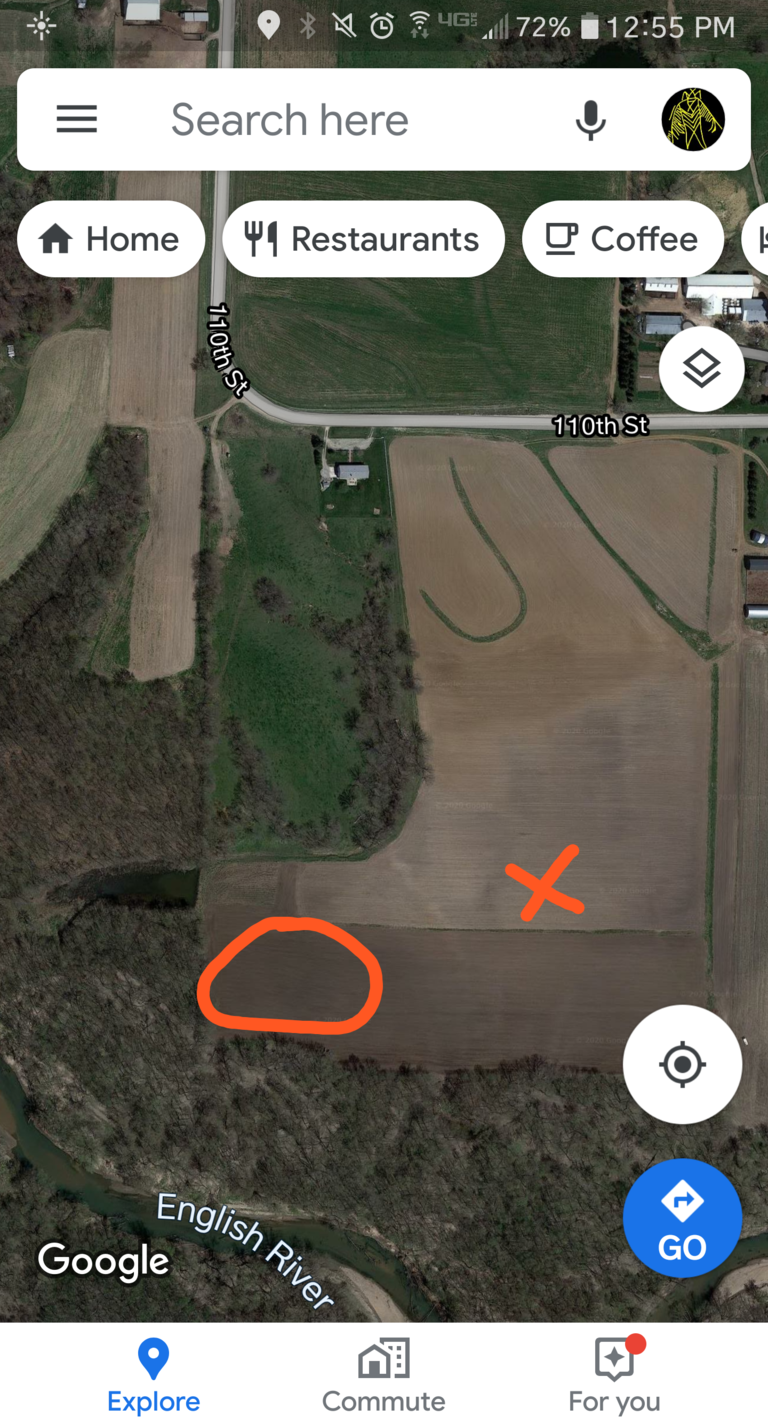
Around 32,000 archaeological sites are recorded in the Iowa Site File maintained by the Office of the State Archaeologist
Recording Site Information
In Iowa, an archaeological site consists of one or more artifacts that are at least 50 years old. At a minimum, the OSA encourages the documentation of:
- WHERE. Include a map and a written description of the find area.
- WHAT. Document as much as you know about the artifact and material type(s).
- WHEN. Note the date(s) you found and recorded the archaeological site.
- WHO. List who found the site, who owns the property, and who is making the site record.
Archaeologist Bill Whittaker records a site with Sam Collins in Mills County, Iowa

WHEN AN ARTIFACT'S ORIGINAL LOCATION IS LOST, THE PIECE LOSES PART OF ITS IDENTITY
Making Maps & Taking Photos

These images do not represent an actual site locations; random locations were chosen for education purposes

Site maps can be a sketch, a circle drawn on a paper map, or even a marked-up screenshot of a map or aerial photo from your smartphone. At a minimum, note:
- The approximate location of artifacts. GPS or latitude & longitude coordinates are helpful, but sometimes you may only know of the field or farm.
- Local landmarks such as creeks, rivers, and named roads.
Taking Photos
- Photograph all sides of your artifact(s).
- Place a scale in the photo. You can use a ruler, a dollar bill, or even a coin.
- It can be helpful to draw or trace the artifact(s) as well.
- You can also take landscape or overview photos of the archaeological site area to include in the site file. Note the compass direction of your photos.
Working with OSA
Artifact collectors have the potential to contribute a wealth of information to the archaeological record! OSA can assist with both artifact identification and adding your site to the Iowa Site File.
We will NOT:
- Reveal your collecting spots. Archaeological site locations are confidential.
- Seize any private property.
- Assign a monetary value to your artifacts.
OSA also offers para-professional training for land management organizations. These workshops introduce participants to basic artifact and site identification, archaeological site file paperwork, and applicable laws and regulations.